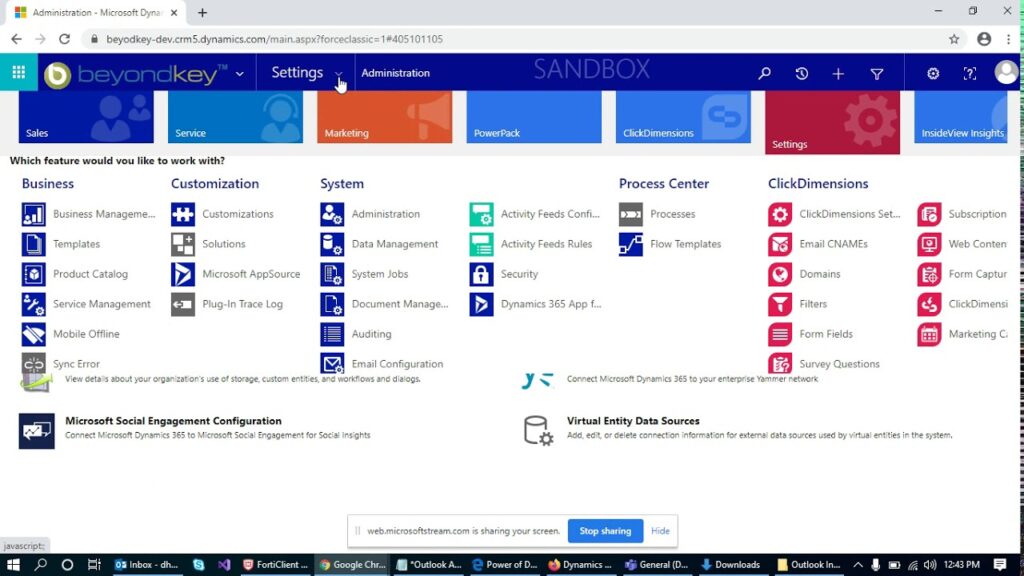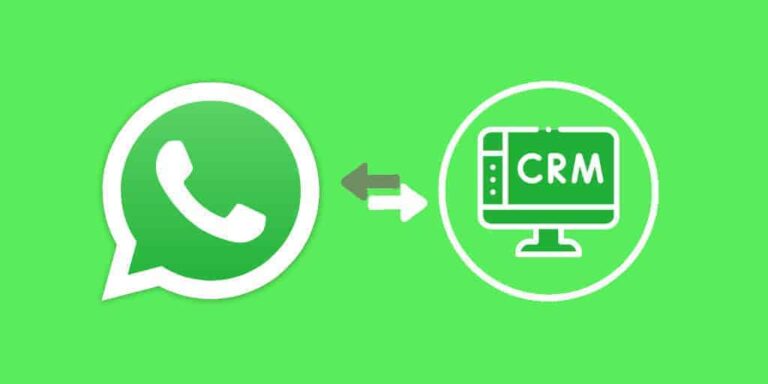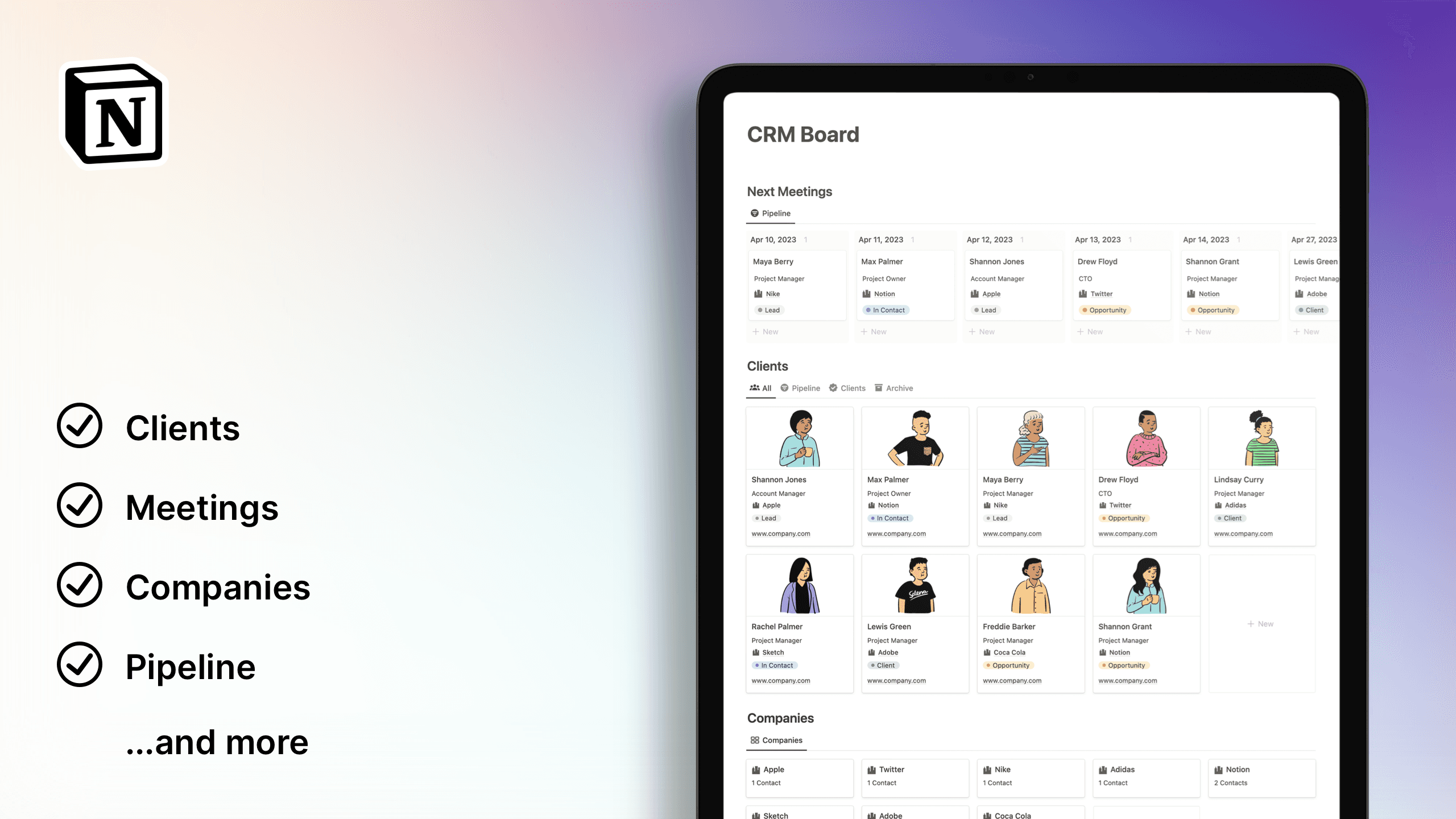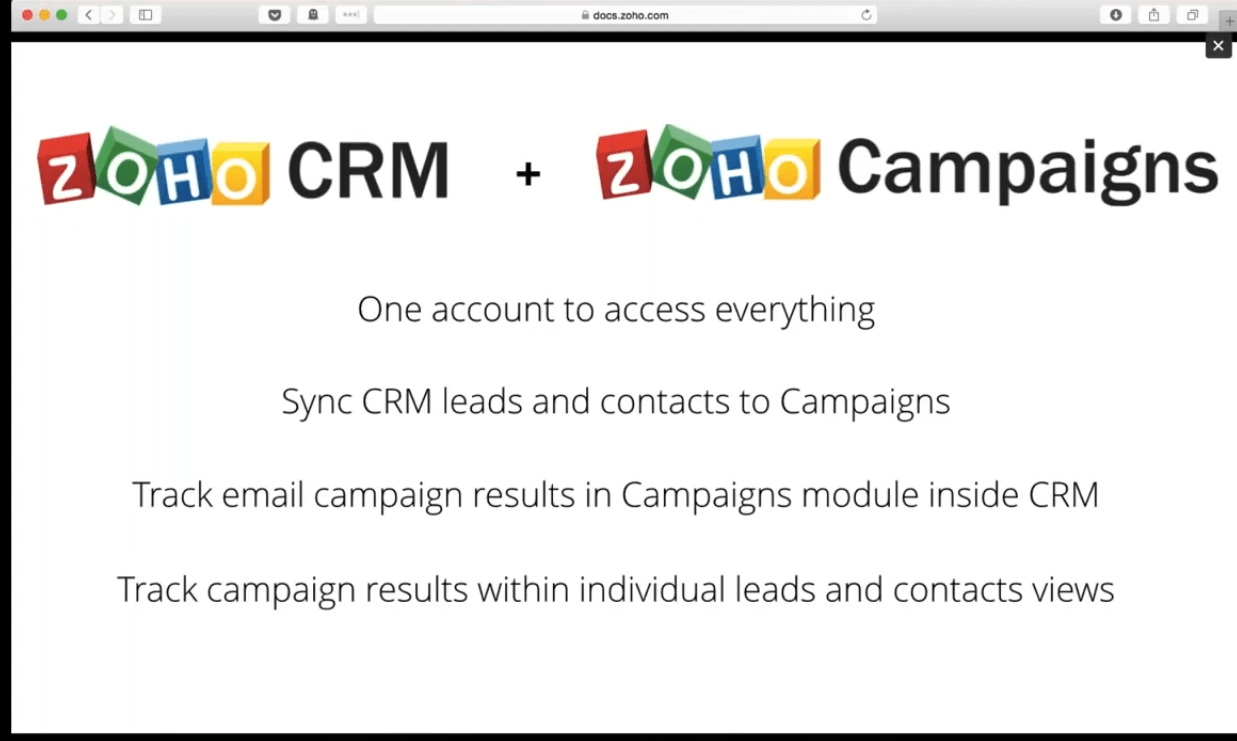
Unlocking Sales Potential: The Power of CRM Integration with Forecasting
In today’s fast-paced business environment, staying ahead of the curve is crucial. Sales teams are constantly striving to meet targets, close deals, and drive revenue. But how can you equip your sales force with the tools they need to succeed? The answer lies in a powerful combination: Customer Relationship Management (CRM) integration with forecasting. This synergy can revolutionize your sales process, providing unparalleled insights and empowering your team to achieve exponential growth.
This article delves deep into the world of CRM integration with forecasting. We’ll explore the benefits, the implementation process, and the key considerations for choosing the right tools. Get ready to discover how this dynamic duo can transform your sales operations and propel your business to new heights.
Understanding the Core Concepts: CRM and Forecasting
Before we dive into integration, let’s establish a solid understanding of the fundamental components: CRM and forecasting.
What is CRM?
Customer Relationship Management (CRM) is more than just a software; it’s a strategic approach to managing all your company’s interactions and relationships with current and potential customers. Think of it as the central nervous system of your sales and marketing efforts. A robust CRM system serves as a centralized repository for all customer data, including contact information, communication history, sales interactions, and more. This comprehensive view allows sales teams to:
- Personalize customer interactions
- Improve lead management
- Streamline sales processes
- Enhance customer satisfaction
- Gain valuable insights into customer behavior
Popular CRM platforms include Salesforce, HubSpot, Zoho CRM, and Microsoft Dynamics 365, each offering a range of features tailored to different business needs and sizes.
What is Forecasting?
Sales forecasting is the process of predicting future sales based on historical data, market trends, and other relevant factors. It’s like having a crystal ball, but instead of guesswork, it relies on data-driven analysis. Accurate forecasting is essential for:
- Setting realistic sales targets
- Optimizing resource allocation
- Managing inventory levels
- Making informed business decisions
- Identifying potential risks and opportunities
Forecasting methods can range from simple techniques like intuition-based predictions to complex statistical models that incorporate multiple variables. The accuracy of your forecast directly impacts your ability to make sound business decisions and achieve your revenue goals.
The Symphony of Success: Benefits of CRM Integration with Forecasting
When you integrate CRM with forecasting, you create a powerful synergy that unlocks a wealth of benefits for your sales team and your entire organization. Here are some of the most significant advantages:
Enhanced Accuracy in Forecasting
One of the primary benefits of CRM integration is the improvement in forecasting accuracy. By leveraging the data stored within your CRM, such as deal stages, sales cycle lengths, and historical win rates, you can create more reliable forecasts. This integration allows you to:
- Automate Data Collection: Eliminate manual data entry and reduce the risk of human error by automatically pulling data from your CRM into your forecasting models.
- Gain Real-time Insights: Access up-to-the-minute data on deal progress, allowing you to make more informed predictions.
- Identify Trends and Patterns: Analyze historical sales data within your CRM to identify patterns and trends that can inform your forecasting models.
This enhanced accuracy helps you make better business decisions, optimize resource allocation, and achieve your sales targets more consistently.
Improved Sales Team Efficiency
CRM integration streamlines sales processes, freeing up your team to focus on what they do best: closing deals. By automating tasks and providing easy access to critical customer data, you can significantly improve sales team efficiency. This includes:
- Reduced Manual Data Entry: Eliminate the need for manual data entry by automatically populating forecasting models with data from your CRM.
- Faster Deal Qualification: Quickly identify and prioritize high-potential leads by analyzing CRM data.
- Simplified Reporting: Generate accurate and insightful sales reports with just a few clicks, saving valuable time and effort.
With improved efficiency, your sales team can spend more time engaging with customers, building relationships, and driving revenue.
Better Sales Performance Management
CRM integration with forecasting provides a more comprehensive view of sales performance, enabling you to effectively manage your sales team and drive better results. You can:
- Track Progress Against Targets: Monitor your team’s performance in real-time and identify areas where they may need additional support or coaching.
- Identify Bottlenecks: Analyze your sales pipeline to pinpoint bottlenecks and inefficiencies that are hindering deal closure.
- Optimize Sales Strategies: Use data-driven insights to refine your sales strategies and improve your overall sales performance.
By using this integrated approach, you can create a data-driven culture of continuous improvement within your sales organization.
Enhanced Customer Relationship Management
CRM integration with forecasting isn’t just about sales; it’s also about building stronger customer relationships. By gaining a deeper understanding of your customers, you can personalize your interactions and provide a more tailored experience. This leads to:
- Improved Customer Satisfaction: By understanding customer needs and preferences, you can deliver a more satisfying customer experience.
- Increased Customer Loyalty: Personalized interactions and proactive communication foster customer loyalty and retention.
- Higher Customer Lifetime Value: By building strong customer relationships, you can increase the lifetime value of each customer.
In the long run, this focus on customer relationships translates into increased revenue and sustainable business growth.
The Implementation Journey: Integrating CRM with Forecasting
Implementing CRM integration with forecasting can seem daunting, but with a well-defined plan and the right tools, it can be a smooth and rewarding process. Here’s a step-by-step guide to help you navigate the implementation journey:
Step 1: Assess Your Needs and Goals
Before you begin, it’s crucial to define your goals and assess your current needs. Consider the following questions:
- What are your primary sales goals? (e.g., increase revenue, improve lead conversion rates, reduce sales cycle length)
- What are your current forecasting methods? (e.g., spreadsheets, intuition-based predictions, basic forecasting software)
- What are the pain points in your current sales process? (e.g., manual data entry, inaccurate forecasts, lack of visibility into sales performance)
- What CRM and forecasting tools are you currently using?
- What data do you need to integrate? (e.g., customer data, deal stages, sales cycle lengths, win rates)
Answering these questions will help you identify the specific features and functionalities you need in your integrated solution.
Step 2: Choose the Right Tools
Selecting the right CRM and forecasting tools is crucial for a successful integration. Consider the following factors:
- Compatibility: Ensure that your CRM and forecasting tools are compatible and can seamlessly integrate with each other.
- Features and Functionality: Choose tools that offer the features and functionality you need to achieve your sales goals.
- Scalability: Select tools that can scale with your business as it grows.
- Ease of Use: Opt for user-friendly tools that your sales team can easily adopt.
- Cost: Consider the pricing and licensing models of each tool.
- Customer Support: Ensure that the vendor provides adequate customer support and training.
Research different CRM and forecasting platforms and compare their features, pricing, and reviews to find the best fit for your business.
Step 3: Plan the Integration
Once you’ve chosen your tools, it’s time to plan the integration process. Create a detailed plan that outlines the following:
- Data Mapping: Identify the specific data fields you need to map between your CRM and forecasting tools.
- Integration Method: Decide how you will integrate the tools (e.g., native integration, third-party integration, custom development).
- Timeline: Create a realistic timeline for the integration process.
- Resources: Identify the resources you will need (e.g., IT staff, sales team members, consultants).
- Testing: Plan for thorough testing to ensure that the integration is working correctly.
A well-defined plan will help you stay organized and avoid potential issues during the integration process.
Step 4: Execute the Integration
With your plan in place, it’s time to execute the integration. Follow these steps:
- Configure the Integration: Set up the integration between your CRM and forecasting tools, following the instructions provided by the vendors.
- Test the Integration: Thoroughly test the integration to ensure that data is flowing correctly between the tools.
- Train Your Team: Provide training to your sales team on how to use the integrated tools.
- Monitor and Optimize: Monitor the integration and make adjustments as needed to optimize performance.
Be patient and persistent throughout the execution process, and don’t hesitate to seek help from the vendor’s support team if you encounter any issues.
Step 5: Ongoing Maintenance and Optimization
Once the integration is complete, it’s important to maintain and optimize it over time. This includes:
- Regular Data Audits: Regularly audit your data to ensure that it is accurate and up-to-date.
- Performance Monitoring: Monitor the performance of your integrated solution and make adjustments as needed.
- User Feedback: Gather feedback from your sales team on how they are using the integrated tools and make improvements based on their suggestions.
- Software Updates: Stay up-to-date with the latest software updates and features.
By consistently maintaining and optimizing your integrated solution, you can ensure that it continues to deliver value to your sales team and your business.
Choosing the Right Tools: Key Considerations
Selecting the right CRM and forecasting tools is paramount to the success of your integration. Here are some key considerations to help you make the right choices:
CRM System Selection
When choosing a CRM system, consider the following factors:
- Features: Does the CRM system offer the features you need, such as lead management, contact management, sales pipeline management, and reporting?
- Scalability: Can the CRM system scale with your business as it grows?
- Integrations: Does the CRM system integrate with other tools you use, such as email marketing platforms, accounting software, and forecasting tools?
- Ease of Use: Is the CRM system user-friendly and easy for your sales team to adopt?
- Cost: What is the cost of the CRM system, including licensing fees, implementation costs, and ongoing maintenance costs?
- Customer Support: Does the CRM vendor provide adequate customer support and training?
- Mobile Accessibility: Does the CRM system offer mobile apps or a mobile-friendly interface?
Some popular CRM systems for sales teams include Salesforce, HubSpot CRM, Zoho CRM, Microsoft Dynamics 365, and Pipedrive. Evaluate these and other options based on your specific needs and budget.
Forecasting Tool Selection
When choosing a forecasting tool, consider the following factors:
- Accuracy: How accurate is the forecasting tool? Does it use sophisticated algorithms and data-driven insights to generate accurate forecasts?
- Integration Capabilities: Does the forecasting tool integrate with your CRM system and other tools you use?
- Features: Does the forecasting tool offer the features you need, such as sales pipeline analysis, deal stage forecasting, and quota management?
- Ease of Use: Is the forecasting tool user-friendly and easy for your sales team to use?
- Customization Options: Can you customize the forecasting tool to meet your specific needs and business processes?
- Reporting and Analytics: Does the forecasting tool provide comprehensive reporting and analytics capabilities?
- Pricing: What is the cost of the forecasting tool, including licensing fees and any additional costs?
Some popular forecasting tools include: InsightSquared, Clari, Aviso, and others. Research and compare these tools, taking into account their integration capabilities with the CRM systems you are considering.
Integration Method: Native vs. Third-Party vs. Custom
The method you use to integrate your CRM and forecasting tools can significantly impact the complexity and cost of the integration. Here’s a breakdown of the different integration methods:
- Native Integration: Some CRM and forecasting tools offer native integrations, which means they are designed to work seamlessly together. This is often the easiest and most cost-effective integration method.
- Third-Party Integration: If your CRM and forecasting tools don’t offer native integrations, you can use a third-party integration platform to connect them. These platforms provide pre-built connectors that simplify the integration process.
- Custom Development: If neither native nor third-party integrations are available, you may need to develop a custom integration. This is the most complex and expensive integration method, but it allows you to tailor the integration to your specific needs.
Consider the pros and cons of each integration method and choose the one that best fits your technical expertise, budget, and integration requirements.
Practical Tips for Successful CRM and Forecasting Integration
Here are some practical tips to help you achieve a successful CRM and forecasting integration:
Start with Clean Data
Ensure that your CRM data is clean, accurate, and up-to-date before you begin the integration process. This will improve the accuracy of your forecasts and provide more reliable insights.
Define Clear Goals and Metrics
Establish clear goals and metrics for your CRM and forecasting integration. This will help you measure the success of the integration and identify areas for improvement.
Involve Your Sales Team
Involve your sales team in the integration process. They are the end-users of the integrated solution, so their input is essential to ensure that it meets their needs.
Provide Adequate Training
Provide adequate training to your sales team on how to use the integrated tools. This will help them adopt the tools quickly and effectively.
Monitor and Analyze Results
Monitor the results of your CRM and forecasting integration and analyze the data to identify areas for improvement. Make adjustments as needed to optimize performance.
Prioritize User Adoption
Focus on user adoption by making the integrated tools easy to use and providing ongoing support to your sales team. The more your team uses the tools, the more value you will get from the integration.
Stay Flexible and Adaptable
Be prepared to adapt your integration strategy as your business needs change. The sales landscape is constantly evolving, so it’s important to stay flexible and adaptable.
Troubleshooting Common Integration Challenges
Even with careful planning, you may encounter some challenges during the CRM and forecasting integration process. Here are some common issues and how to troubleshoot them:
Data Synchronization Issues
Data synchronization issues can occur when data is not flowing correctly between your CRM and forecasting tools. To troubleshoot this, check the following:
- Integration Settings: Verify that the integration settings are configured correctly.
- Data Mapping: Ensure that the data fields are mapped correctly between the tools.
- Network Connectivity: Check your network connectivity to ensure that the integration can communicate between the tools.
- API Limits: Be aware of API limits and throttle to avoid disrupting the data flow.
If you are still experiencing issues, consult the vendor’s documentation or contact their support team.
Data Accuracy Problems
Inaccurate data can lead to unreliable forecasts and poor business decisions. To address data accuracy problems, consider these steps:
- Data Validation: Implement data validation rules in your CRM to ensure that data is entered correctly.
- Data Cleansing: Regularly cleanse your CRM data to remove duplicates, incorrect entries, and outdated information.
- User Training: Provide training to your sales team on how to enter data accurately.
By maintaining data accuracy, you can generate more reliable forecasts and make better business decisions.
User Adoption Issues
If your sales team is not using the integrated tools effectively, you may not realize the full benefits of the integration. To improve user adoption, consider the following:
- Training and Support: Provide adequate training and ongoing support to your sales team.
- User-Friendly Interface: Ensure that the integrated tools are user-friendly and easy to navigate.
- Incentives: Consider offering incentives to encourage your sales team to use the tools.
- Feedback: Gather feedback from your sales team and make improvements based on their suggestions.
By focusing on user adoption, you can maximize the value of your CRM and forecasting integration.
The Future of Sales: CRM and Forecasting in the Age of AI
The integration of CRM and forecasting is not just a trend; it’s the future of sales. As technology continues to evolve, we can expect even more sophisticated integrations and advancements in the field. Here’s a glimpse into the future:
AI-Powered Forecasting
Artificial intelligence (AI) is poised to revolutionize forecasting. AI-powered forecasting tools can analyze vast amounts of data, identify complex patterns, and generate highly accurate predictions. This can lead to:
- More Accurate Forecasts: AI algorithms can analyze data from multiple sources, including CRM data, market trends, and economic indicators, to generate more accurate forecasts.
- Automated Forecasting: AI can automate the forecasting process, saving sales teams time and effort.
- Predictive Insights: AI can provide predictive insights that help sales teams identify potential risks and opportunities.
As AI technology matures, we can expect to see even more sophisticated AI-powered forecasting tools emerge.
Hyper-Personalization
CRM and forecasting integration will enable hyper-personalization, allowing sales teams to tailor their interactions with customers to a degree never before possible. By leveraging data from your CRM and forecasting tools, sales teams can:
- Personalize Sales Pitches: Tailor sales pitches to individual customer needs and preferences.
- Target the Right Customers: Identify the most promising leads and focus their efforts on the highest-potential opportunities.
- Provide Proactive Support: Anticipate customer needs and provide proactive support.
This level of personalization will lead to stronger customer relationships and increased sales.
Seamless Integrations
As technology advances, we can expect even more seamless integrations between CRM and forecasting tools and other sales and marketing technologies. This will create a unified sales ecosystem, where data flows seamlessly between all your tools. This will include:
- Data-Driven Decision Making: Sales teams will have access to real-time data and insights from all their tools, allowing them to make data-driven decisions.
- Automation and Efficiency: Tasks will be automated, freeing up sales teams to focus on closing deals.
- Improved Collaboration: Sales teams will collaborate more effectively, sharing data and insights seamlessly.
These seamless integrations will empower sales teams to work smarter, not harder.
Conclusion: Embracing the Power of Integrated Sales
CRM integration with forecasting is a game-changer for sales organizations. By combining the power of CRM and forecasting, you can unlock a wealth of benefits, including enhanced accuracy, improved efficiency, better sales performance management, and stronger customer relationships. The implementation process may require careful planning, but the rewards are well worth the effort.
As technology continues to evolve, the future of sales is bright. AI-powered forecasting, hyper-personalization, and seamless integrations will transform the way sales teams operate. By embracing these advancements, you can position your business for long-term success.
Take the first step towards supercharging your sales. Assess your needs, choose the right tools, and implement your CRM and forecasting integration today. Your sales team, and your bottom line, will thank you for it.
The journey to sales success is a continuous one. By integrating CRM with forecasting, you’re not just implementing a new technology; you’re investing in a future where data-driven decisions, strong customer relationships, and unparalleled sales performance are the norm. Embrace the power of integration, and watch your sales soar!


